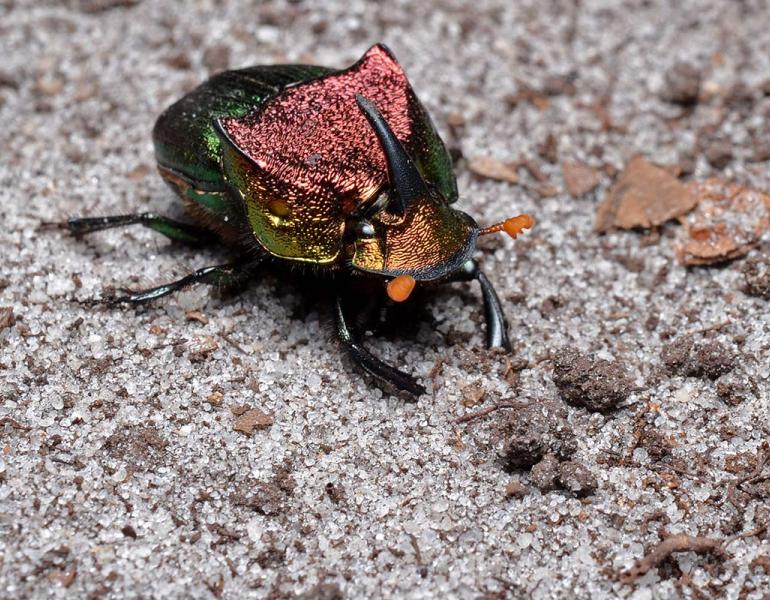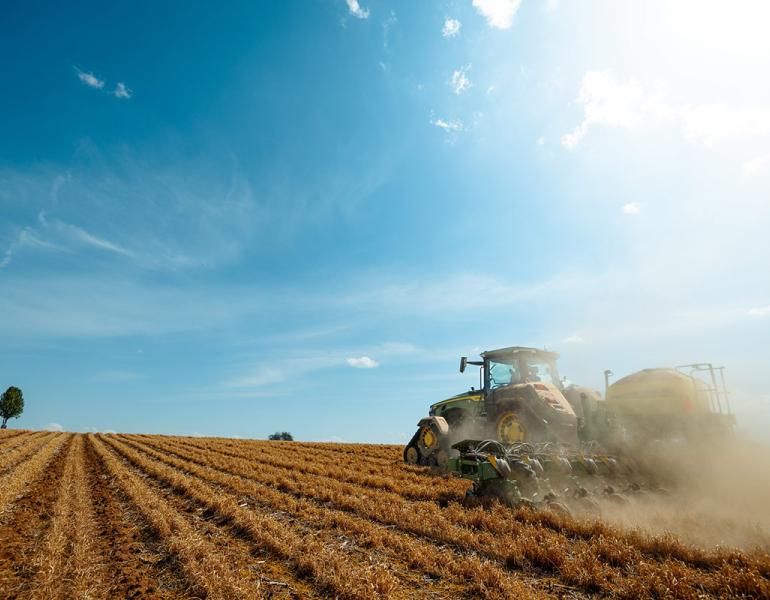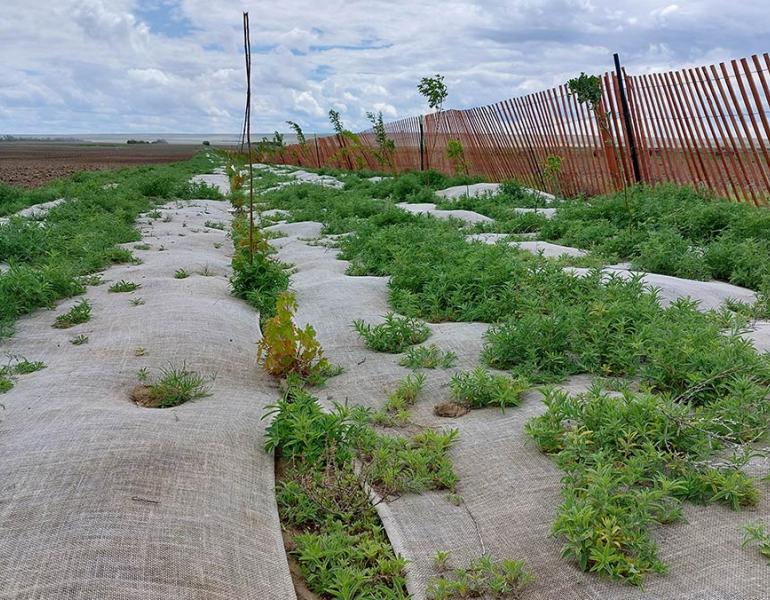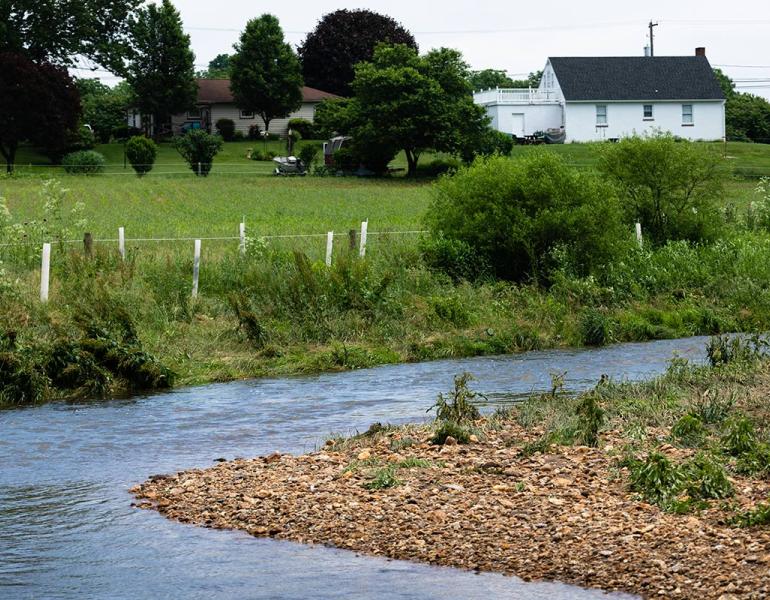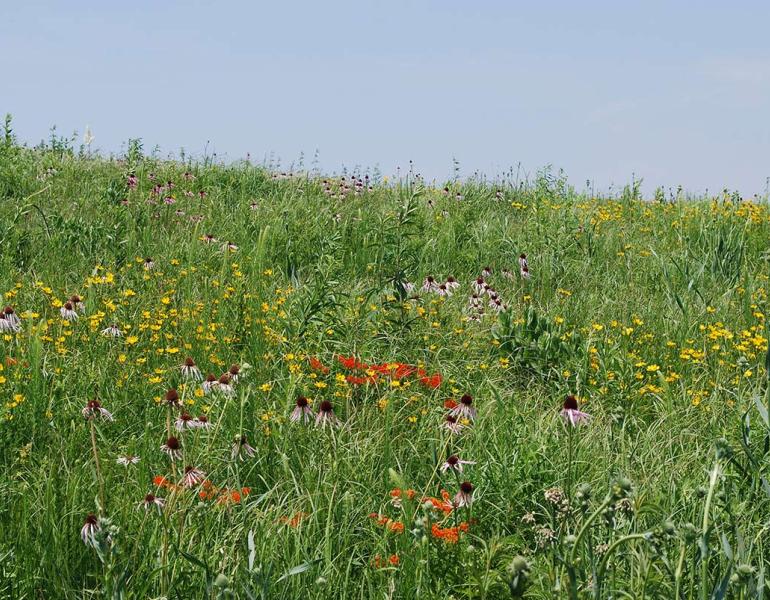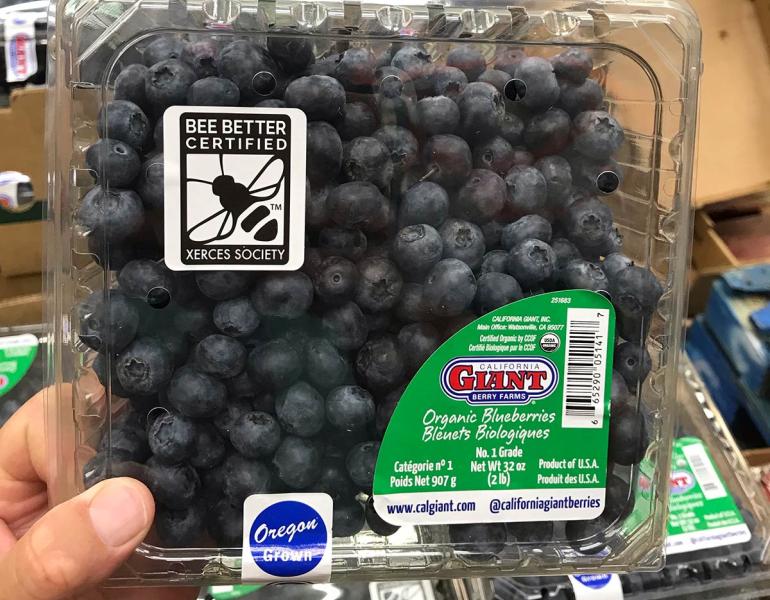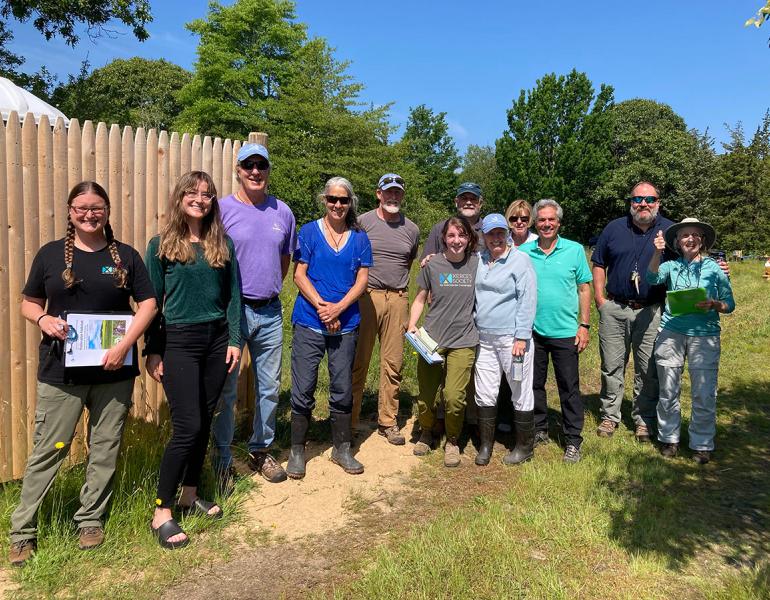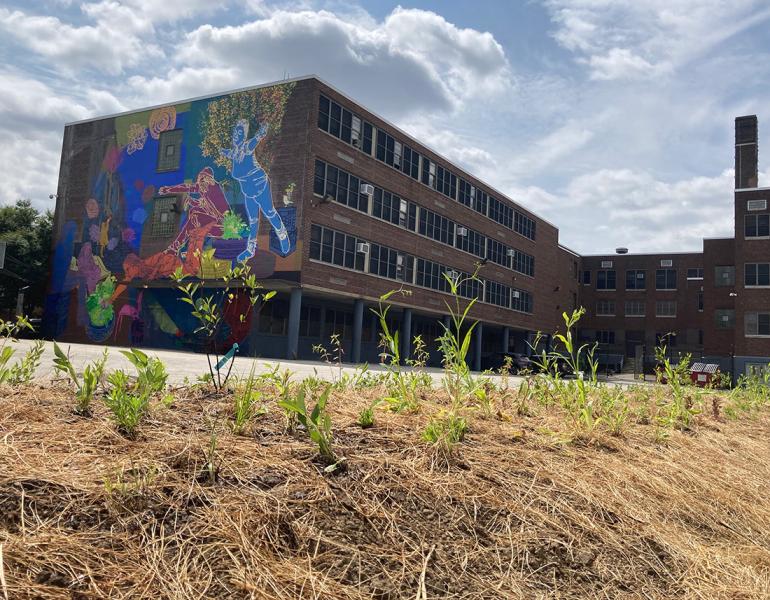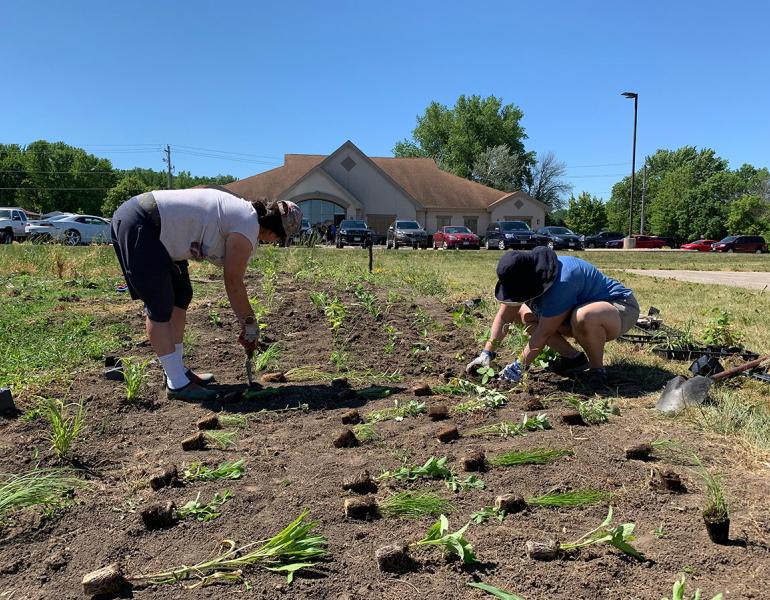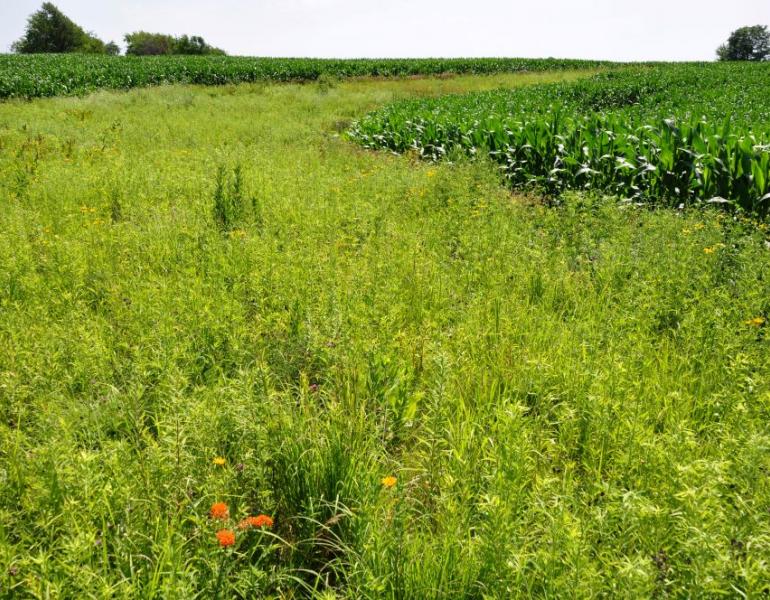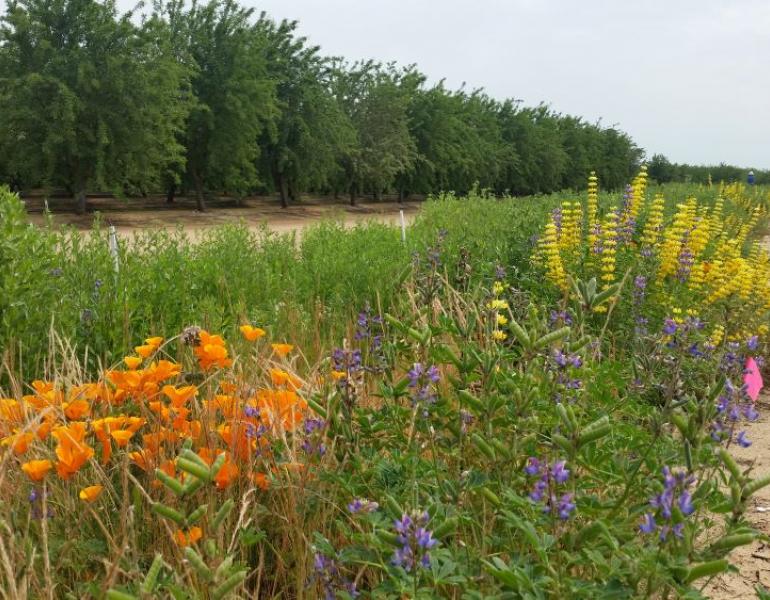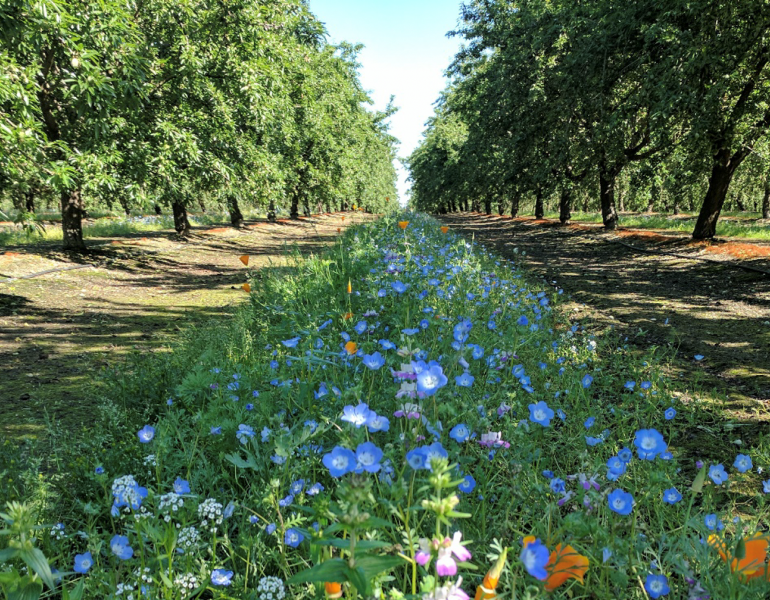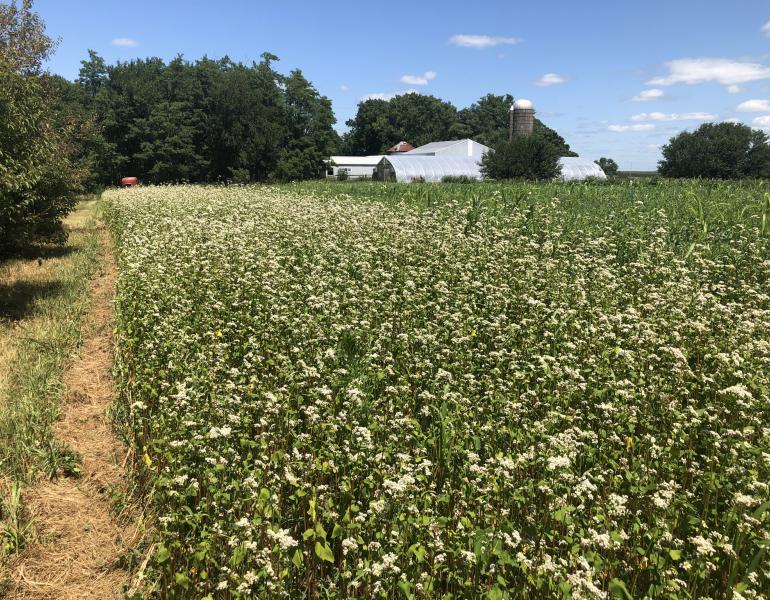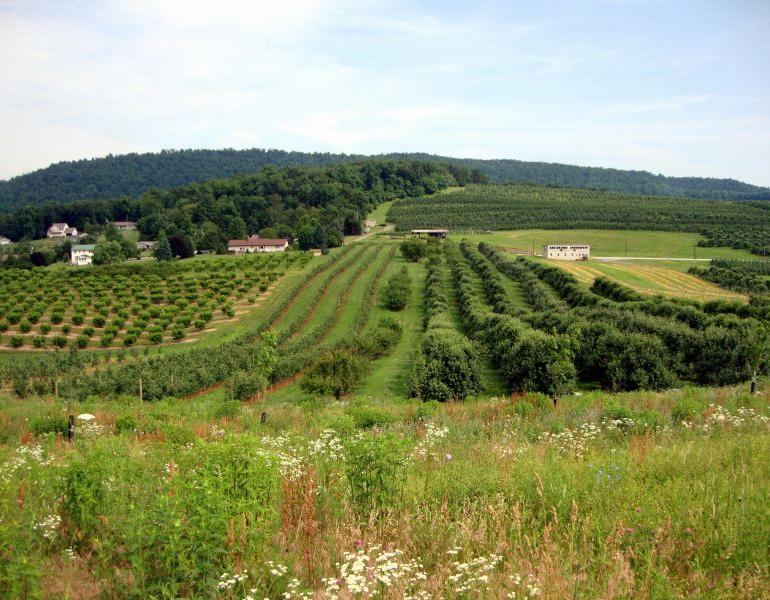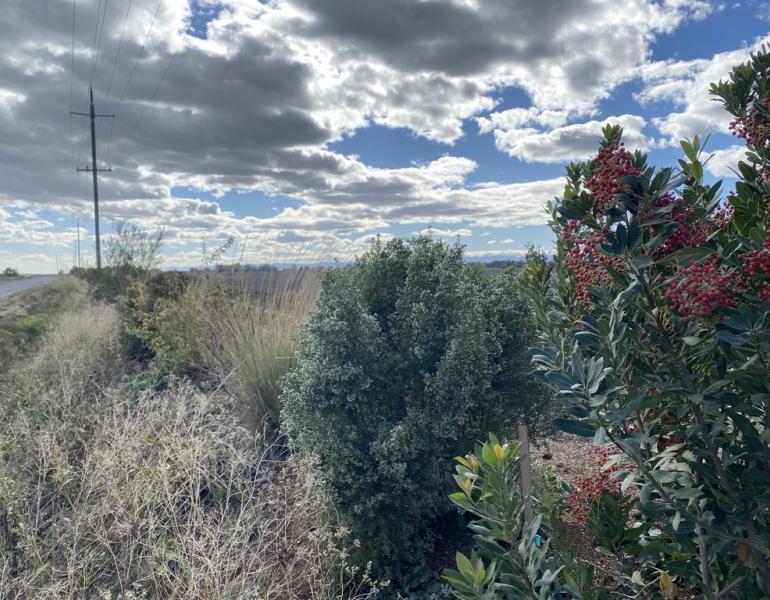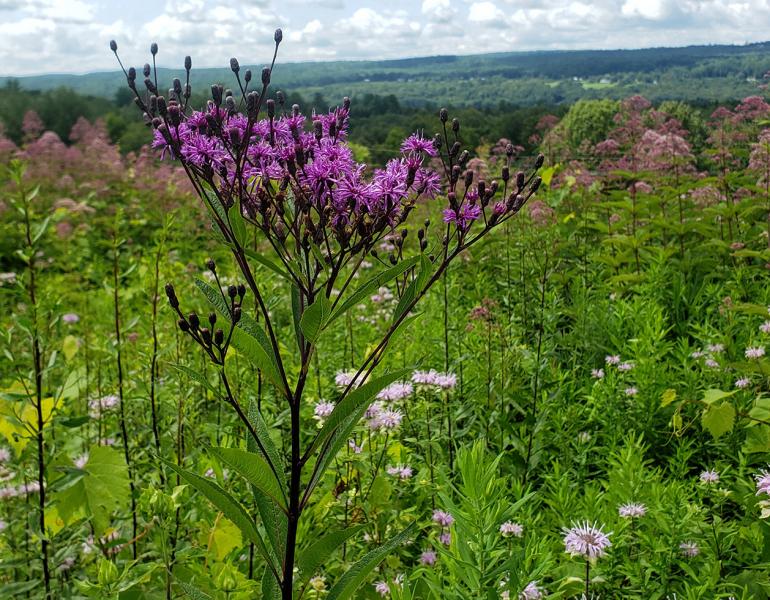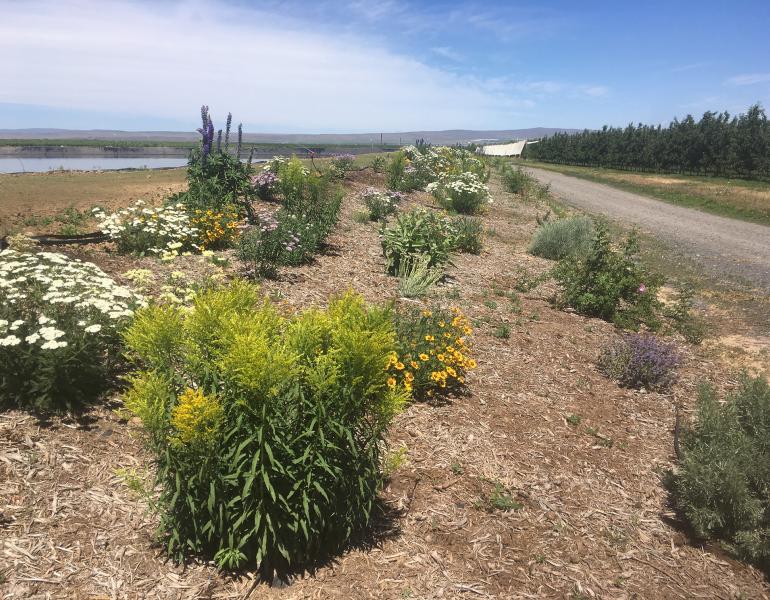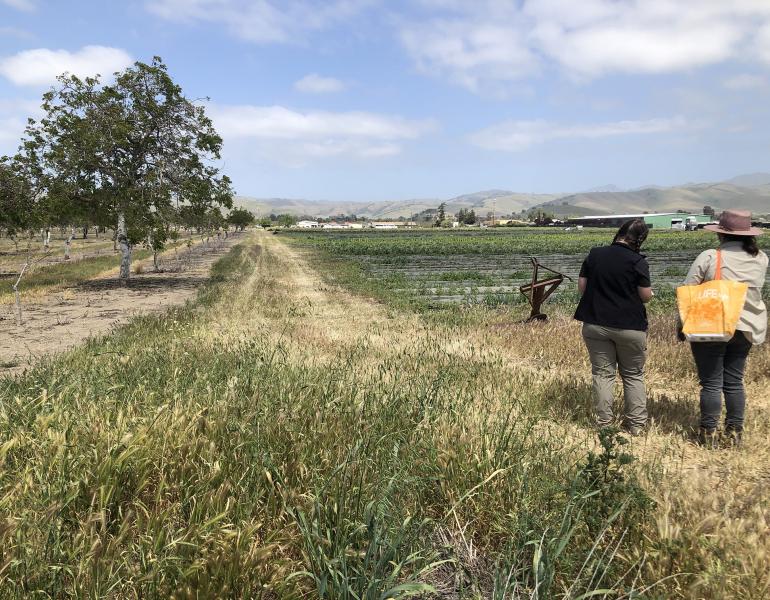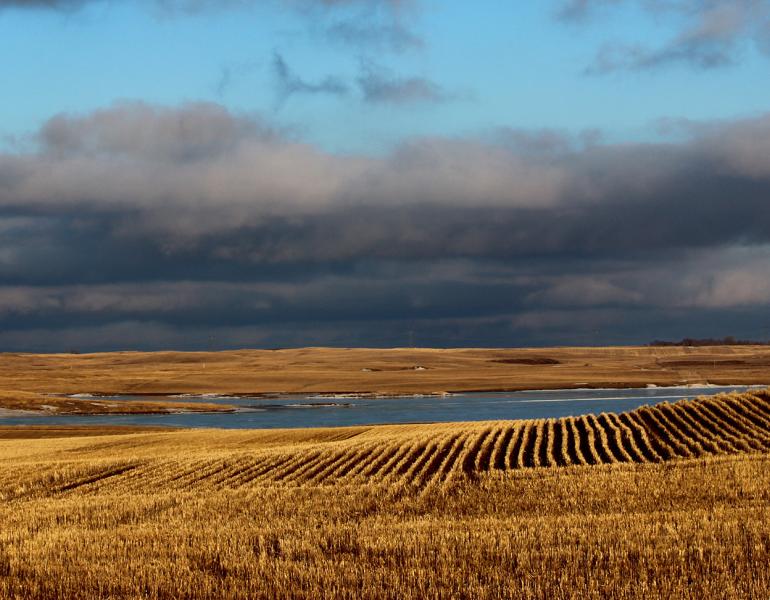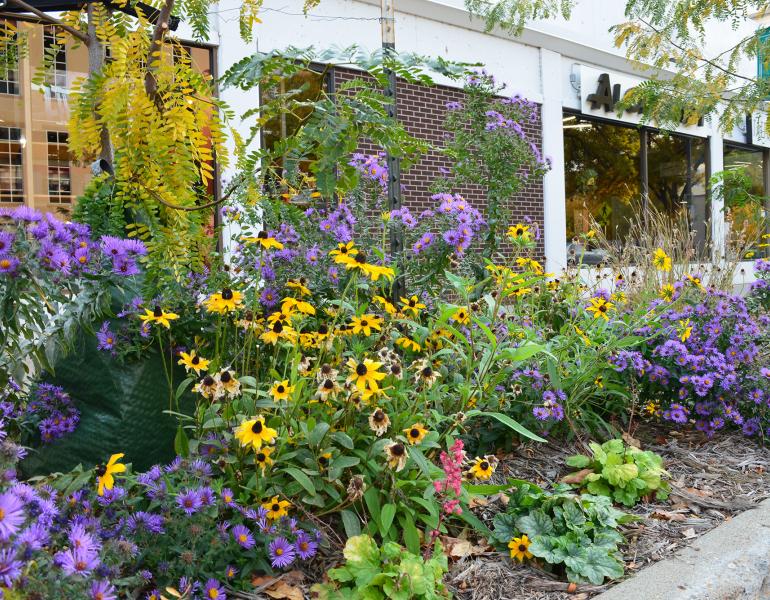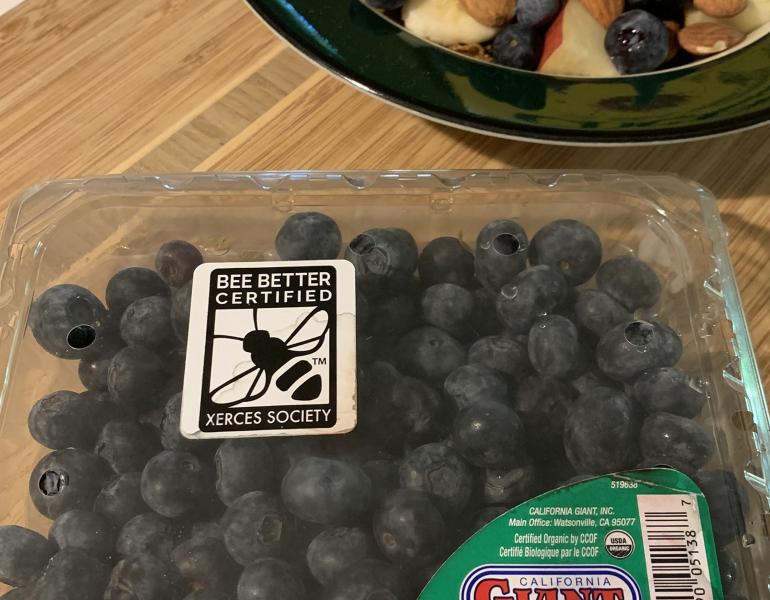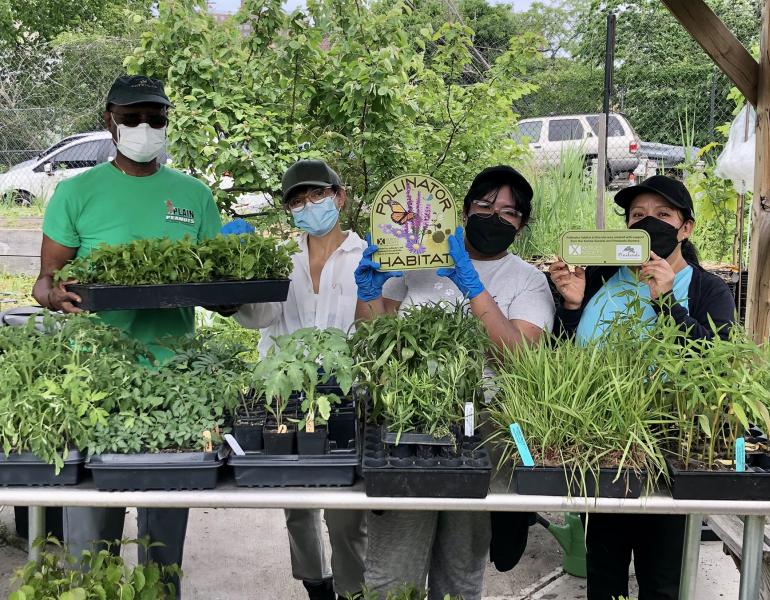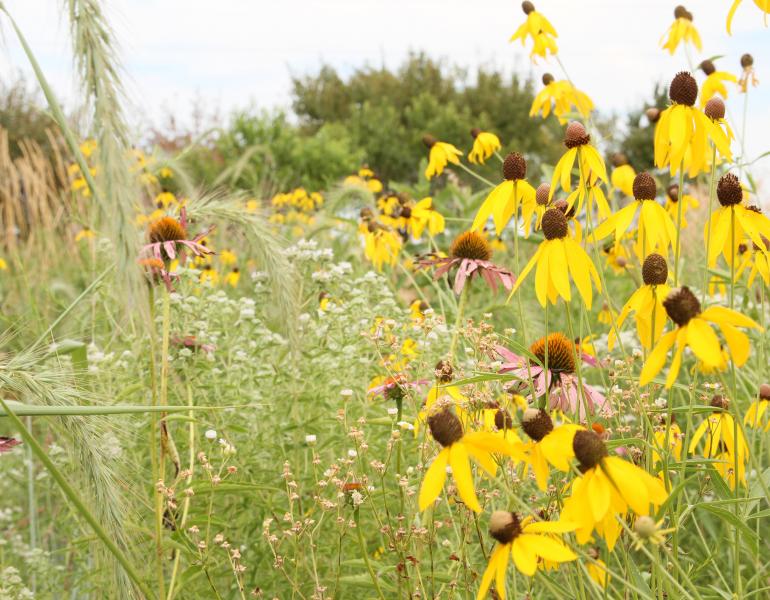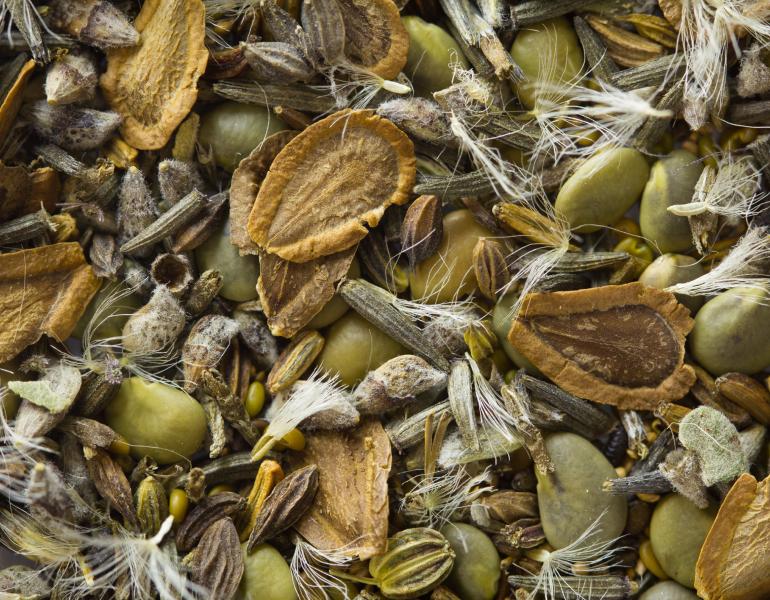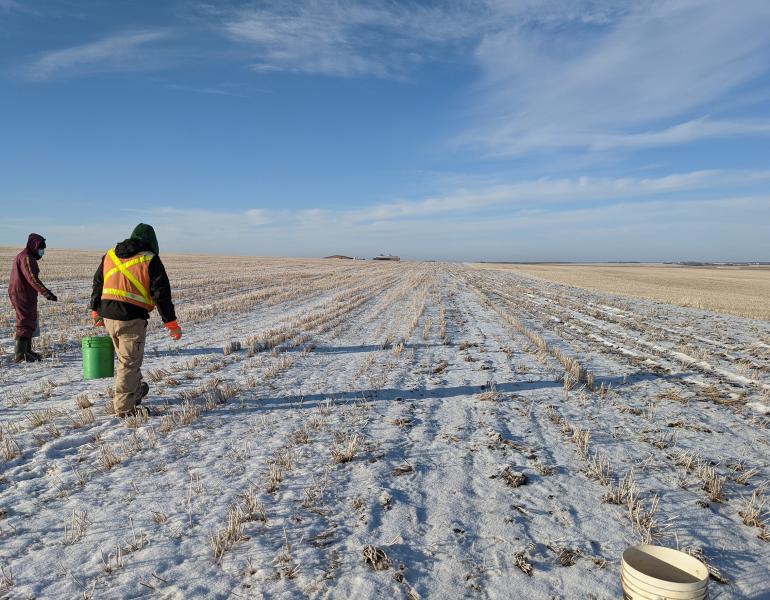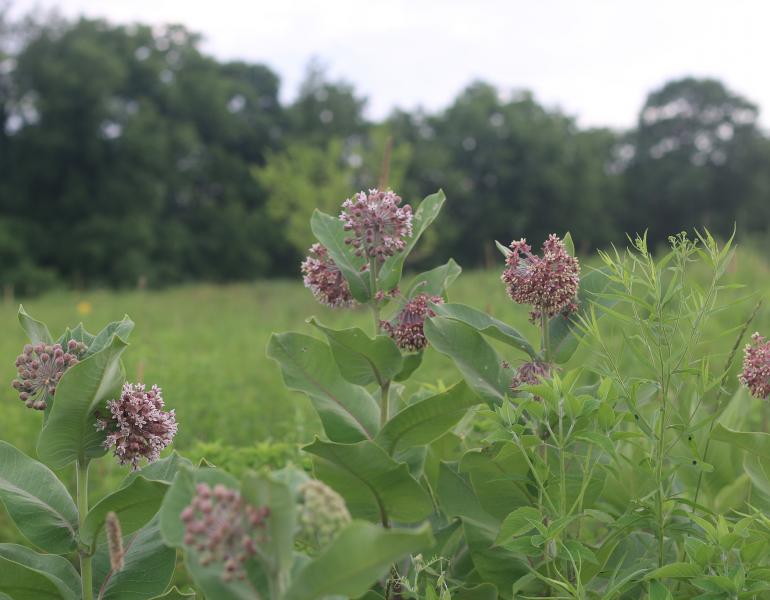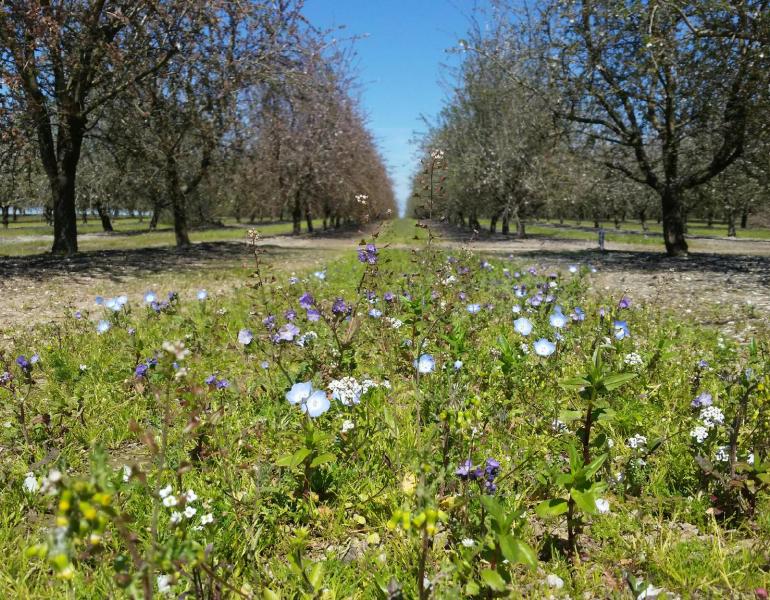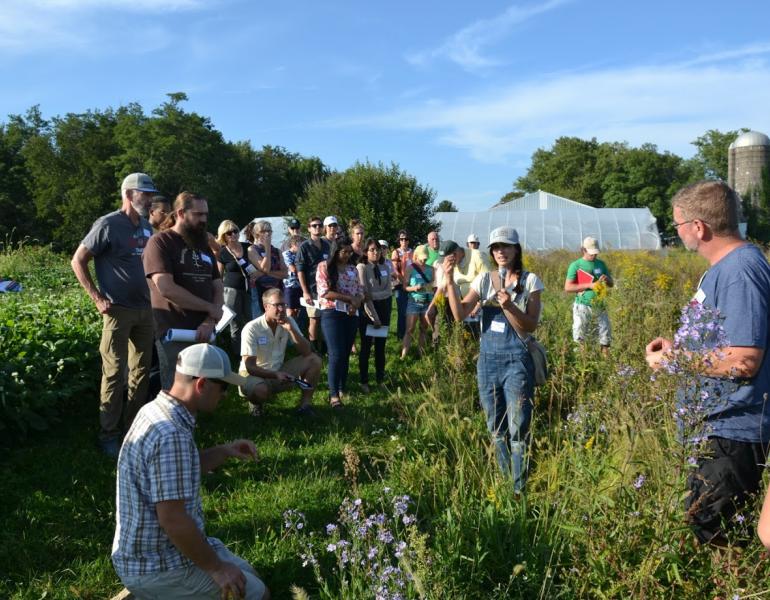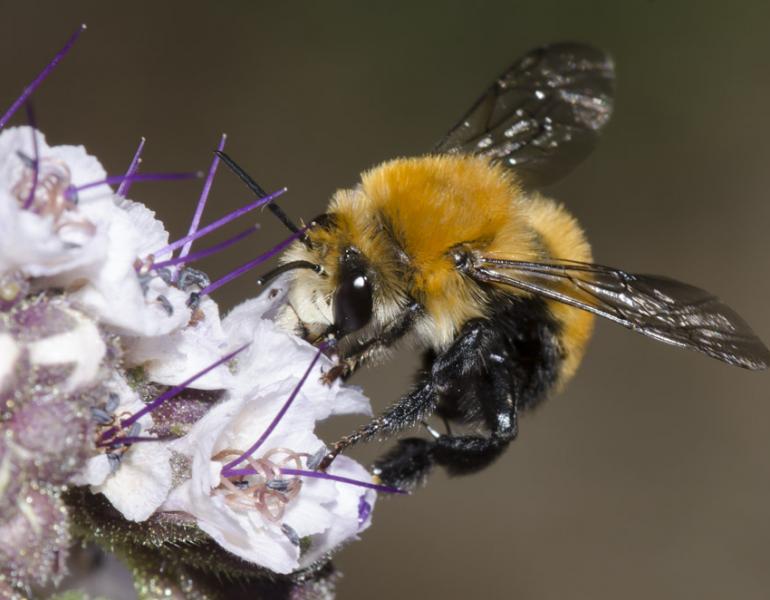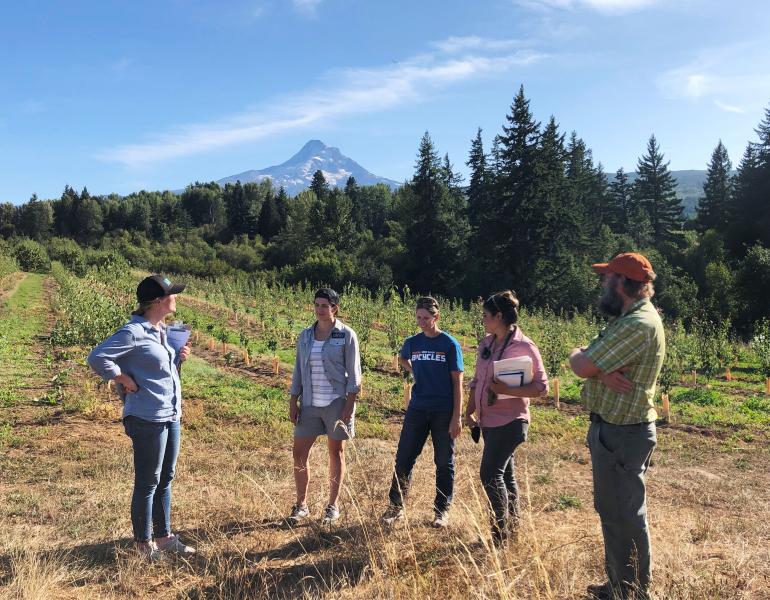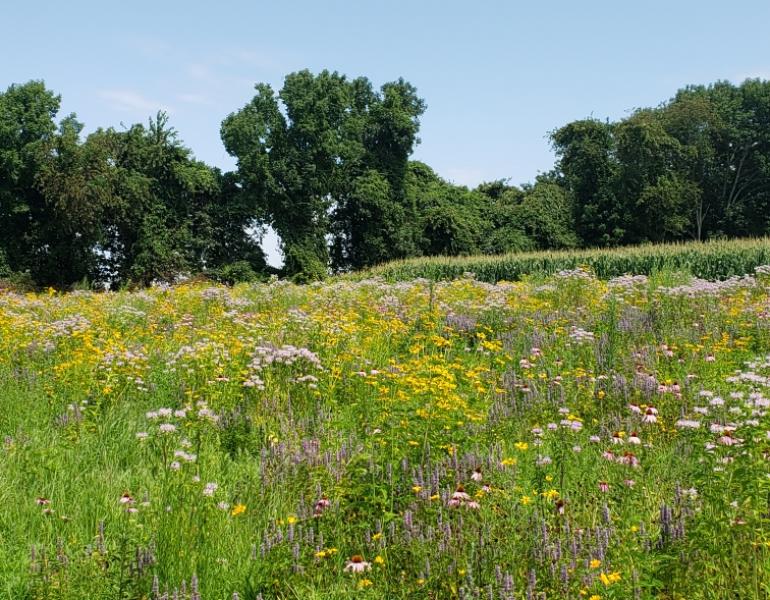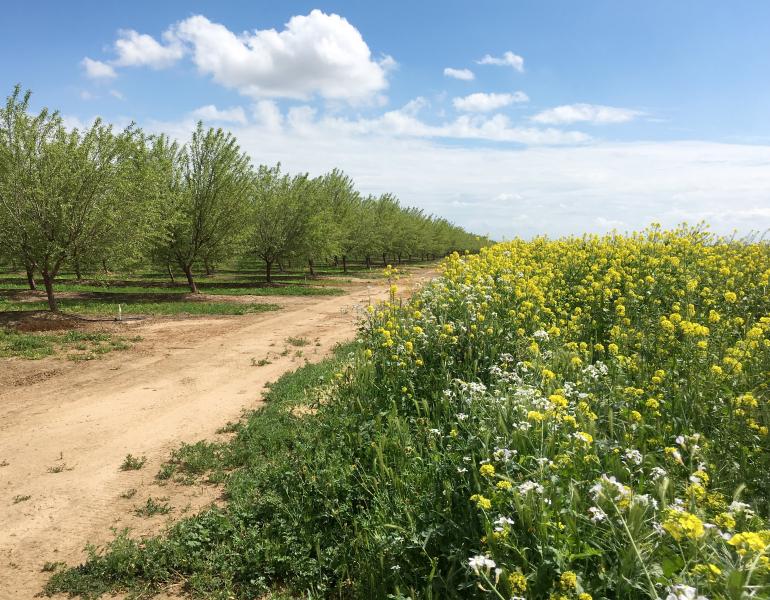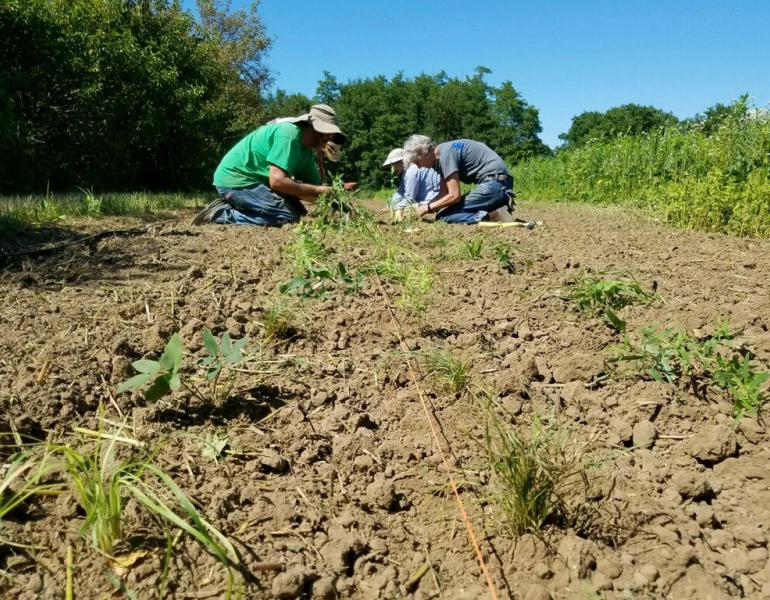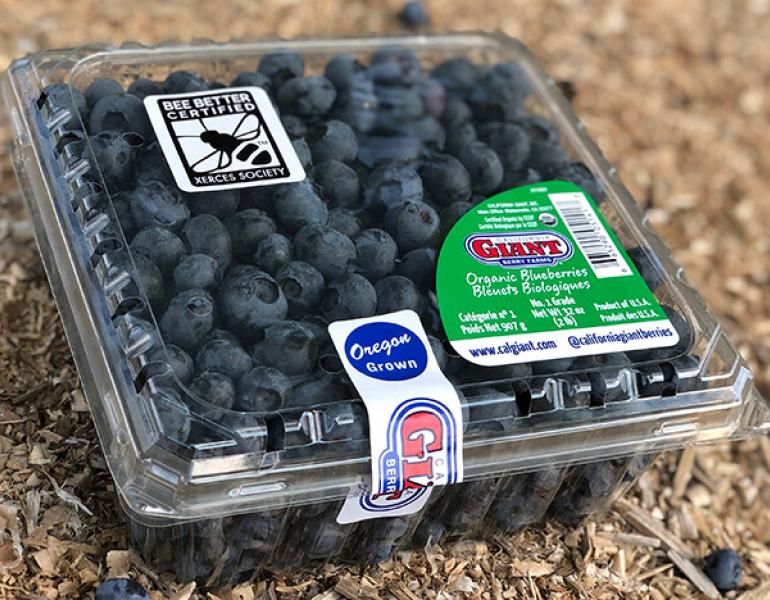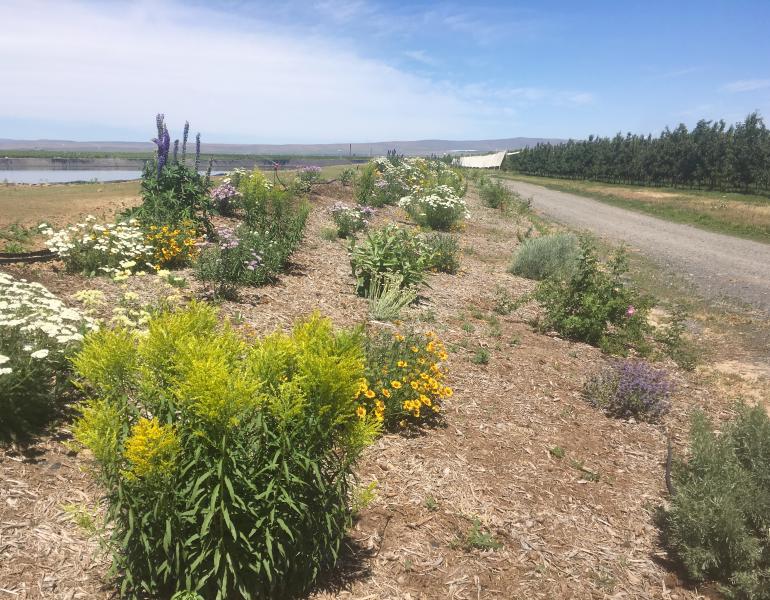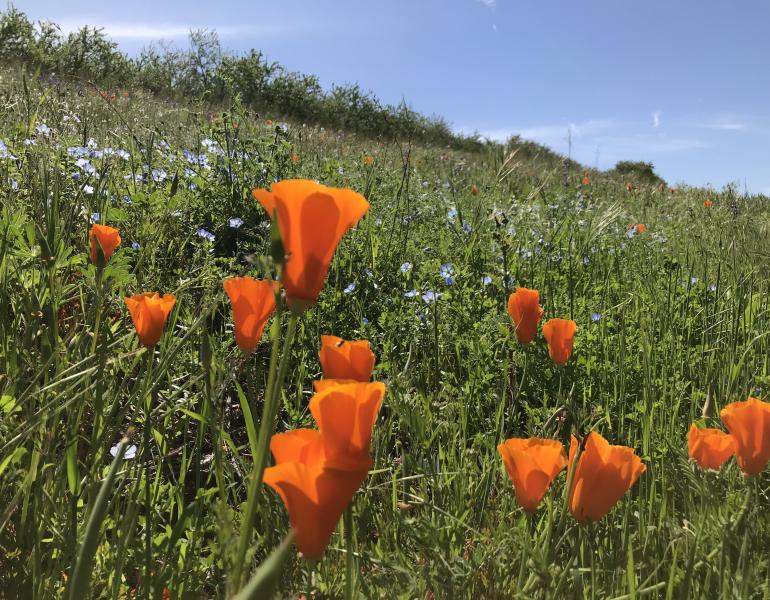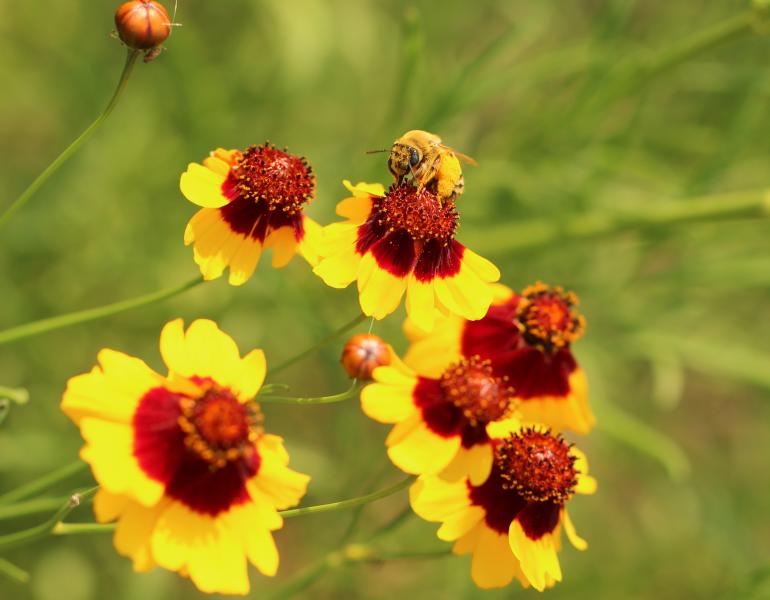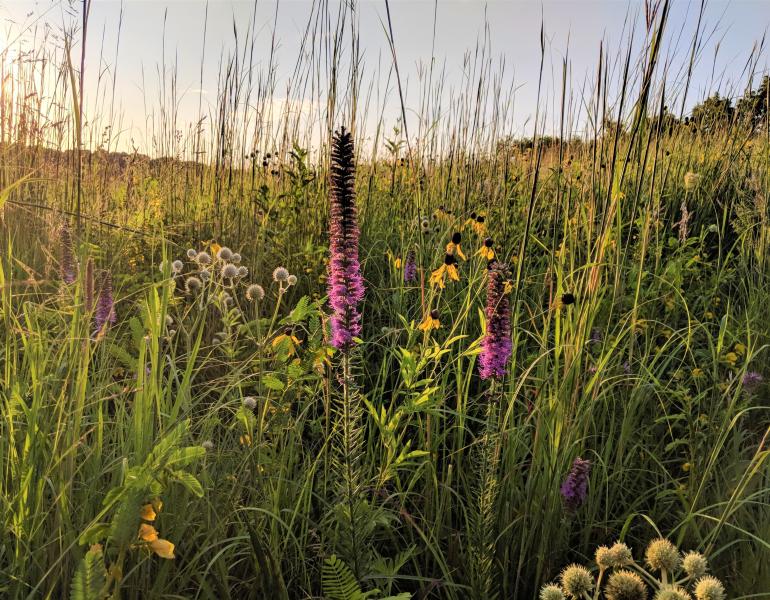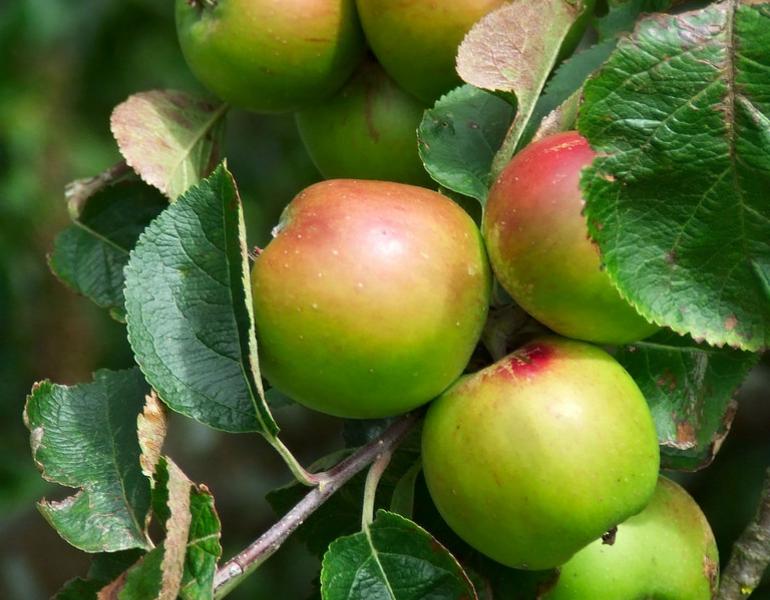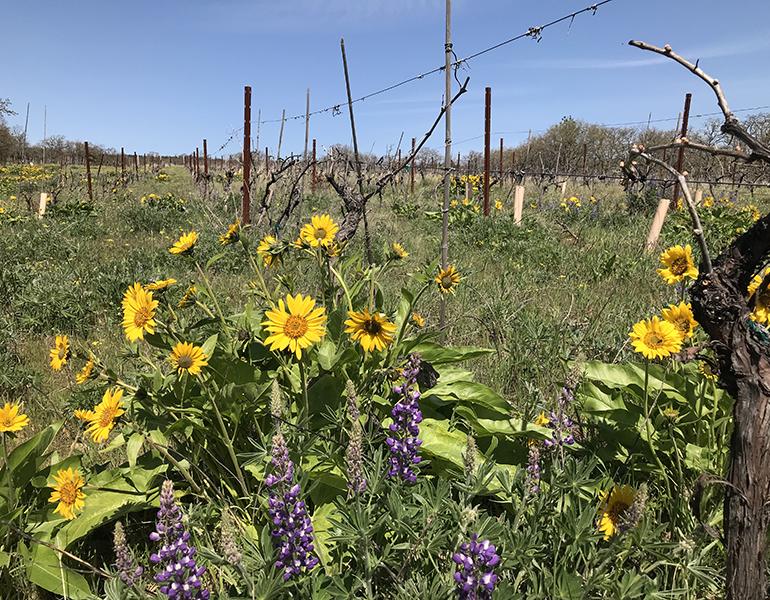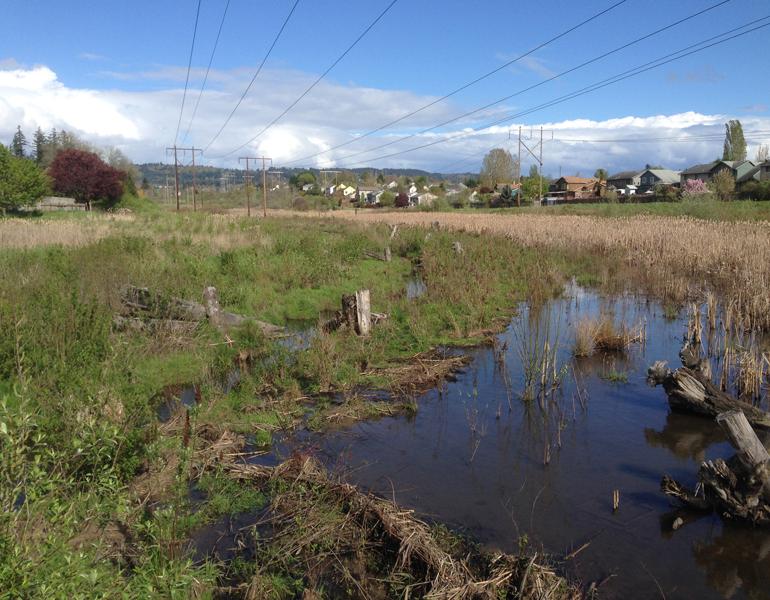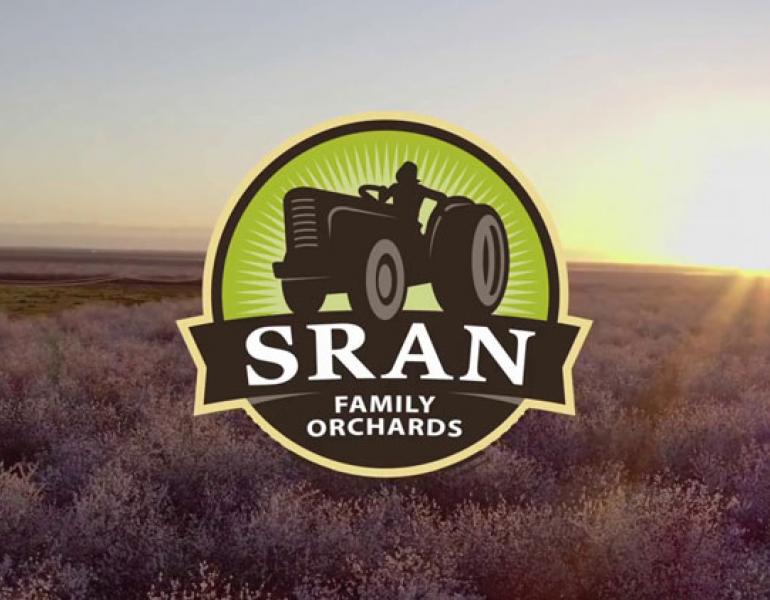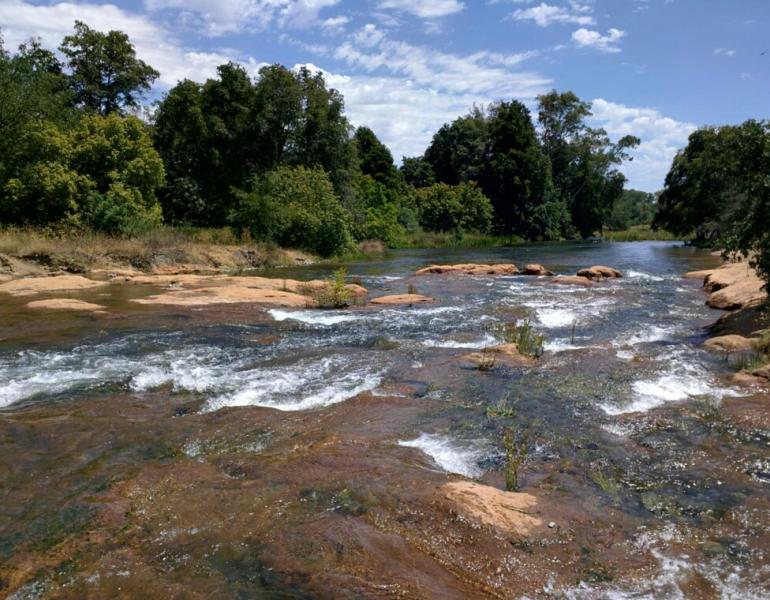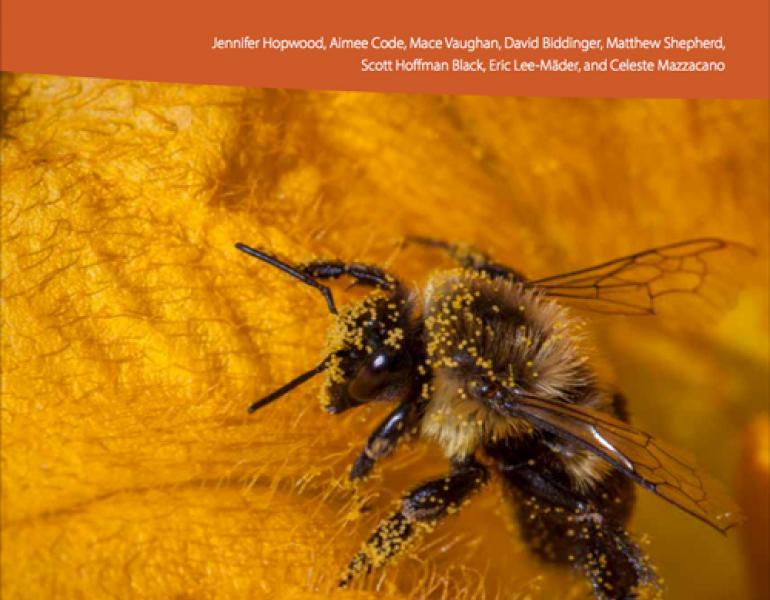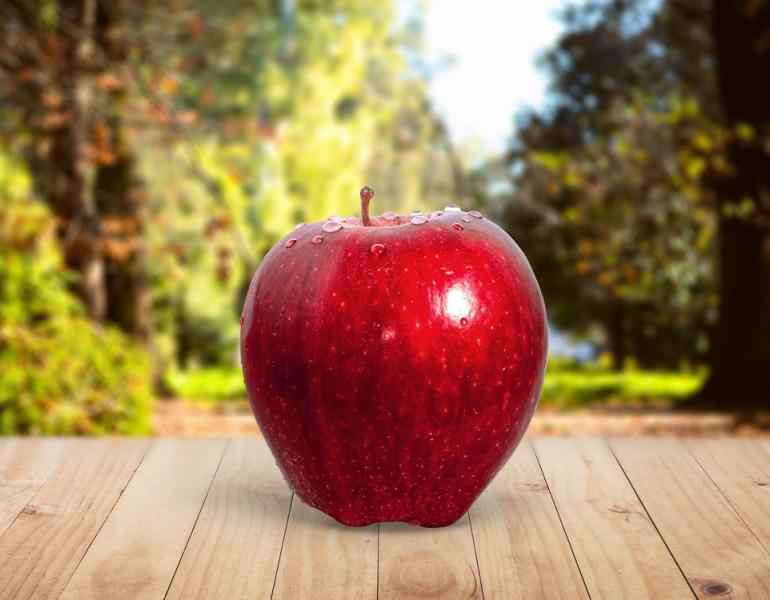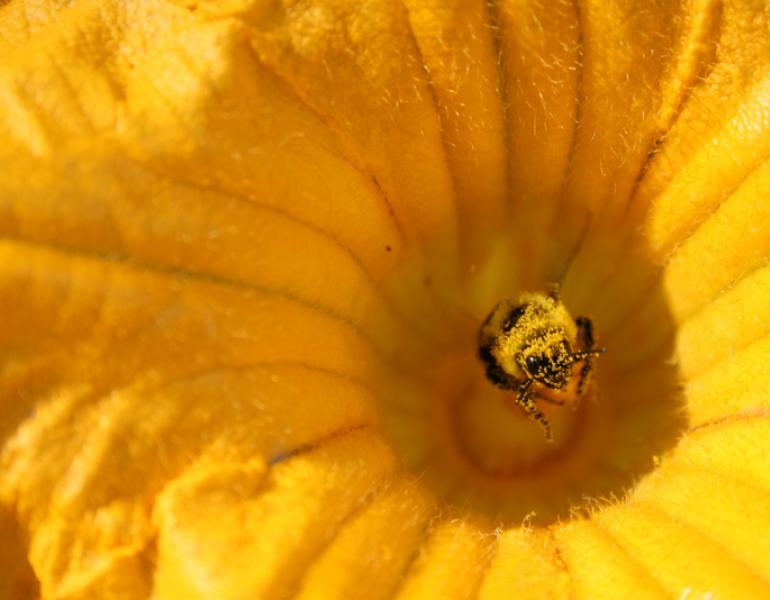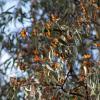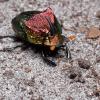Dung beetles are a key component of a healthy ecosystem, in both natural and agricultural areas!
Agriculture and Farms
How To Control Garden Pests While Supporting Pollinators
Learn how to set your garden up for success with integrated pest and pollinator management (IPPM)!
The EPA's New Strategies to Protect Endangered Species from Pesticides Need Improvement
The Environmental Protection Agency’s new rules represent progress toward reducing the risk of pesticides, but there are flaws in the plan that limit its effectiveness.
Living Snow Fence Helps Both Crops and Pollinators in the Semi-Arid West
Not only do hedgerows help block damaging winds, but they can create pollinator habitat, increase carbon capture, and bolster crop production!
Inspiration for Pollinator Conservation: Habitat Kits for Urban Farms and Gardens
Stefanie Steele shares her path to pollinator conservation, and her work to help urban farmers add pollinator habitat to their spaces!
Inspiration for Pollinator Conservation: Protecting Waterways with Pollinator Habitat
Julie Michaelson shares her path to pollinator conservation, and her work to build habitat and protect our waterways by surrounding them with native plants!
Inspiration for Pollinator Conservation: Hedgerow Habitat on Farms
Angie Orpet talks about her career path, and her work building pollinator habitat on farms!
Inspiration for Pollinator Conservation: Wildflowers on Rangelands
Sarah Hamilton Buxton shares her path to pollinator conservation, and her work to promote more diverse plant communities on rangelands of the Great Plains!
More Retailers Are Requiring Produce to be Certified as Pollinator-Friendly
With two of the largest food retail companies in the US already making commitments to pollinator health, more are likely to follow!
What We Can Learn From Québec’s Success With Regulating Pesticide-Treated Seed
Regulating pesticide-treated seeds benefits both growers and wildlife — and is becoming more common.
Planting Native Prairies Makes for Grazing Pastures that Support Both Cows and Pollinators
Micah Kloppenburg shares his ruminations from a small farm in Wisconsin experimenting with conservation-forward practices
Cape Cod Town Transforms Mining Pit to Community Farm
Restored land in Massachusetts makes space for agriculture, wildlife habitat, and community.
High School Students Depave a Parking Lot to Plant a Garden
With support from USDA NRCS, Xerces, and the local community, a Philadelphia high school parking lot became a space for gardening and pollinator habitat.
Pollinator Friendly Cover Cropping for Vegetable Farmers
Planting cover crops in bare agricultural fields not only improves soil health and suppresses weeds, but it can also attract beneficial insects! We're here to help navigate the complexities and nuances of the optimal cover cropping system.
Planting for Bees, Butterflies, and Beauty in the Bronx
Two urban farms in the Bronx demonstrate a symbiotic relationship between people and pollinators. Communities at the Garden of Happiness and Tawqua Community Farm restore quality pollinator habitat and pollinators keep the gardens thriving and producing.
Love for the Land Inspires Pollinator Habitat Conservation Across the Driftless Area
The Driftless Area is a magical and rugged terrain in the midwest, covered in hardwood forests, oak savannas, prairies, and wetlands that provide unique habitat for wildlife of all kinds. In modern times, various factors have changed the landscape. A shared love of the land has inspired a community effort to restore these areas so that its inhabitants can all thrive together.
Making Space for Native Bees on a Wisconsin Cranberry Farm
More cranberries are produced in Wisconsin than in any other state in the U.S. Most of those cranberry farms use imported honey bees and purchased bumble bees along with toxic pesticides to get the job done. The Stauner family of James Lake Farms is standing up for invertebrates and going against the grain. Farmer John Stauner and his crew are using organic practices and actively supporting native bees for pollination because they value the ecological and entomological significance of their farm in the broader web of life.
Part 2: How research about pesticide risks informs our efforts to rewild agricultural landscapes
Over the past decade, Xerces has worked with thousands of farmers and land managers to build over a million acres of habitat. Each of these projects, no matter how small, is meaningful and important to us. Our staff spend hours on the details, fine-tuning the mix of plants to suit the local conditions and support as many species as possible, determining how the site will be prepared and installed, and finding ways to protect the resulting habitat from pesticides. Last week, I shared a review of the latest research on how agricultural pesticides may impact nearby pollinator habitat. Today, I’ll talk about how we apply this research to our work at Xerces.
Part 1: How research about pesticide risks informs our efforts to rewild agricultural landscapes
Recently, we have been wrestling with questions about the costs and benefits to pollinators of installing habitat in areas that are likely to be occasionally or continuously exposed to pesticides. In this two-part blog, we’ll first dive into recent field studies on pesticide contamination of pollinator food and shelter in agricultural landscapes. This type of applied research helps to inform our conservation efforts.
Investing in pollinator conservation through urban agriculture
Xerces’ conservation efforts span across many different types of landscapes, including cities. With the addition of Stefanie Steele, Xerces new Pollinator Conservation Specialist for Urban and Small Farms in Historically Underserved Communities, we are striving to bridge the gap between pollinator conservation efforts in urban and rural agricultural areas.
More Than Food: A New Roadmap for Agriculture
In recent years, invertebrates on farms have received a little more mainstream attention, often under the broader umbrella of “regenerative agriculture,” a loosely defined philosophy that proposes farms should improve rather than diminish natural resources. With supporting investments from the USDA National Resources Conservation Service (NRCS), the Xerces Society recently inaugurated a five-year, multi-state research and development project focused on evaluating conservation practices that simultaneously maximize climate resilience, biodiversity, and market incentives.
Tips for Organic Site Preparation Before You Plant
Organic site preparation is simply using methods and materials outside of the conventional options of chemical herbicides to prepare seedbeds prior to planting. Methods of organic site prep can be solarization, smother cropping, repeated cultivation, sheet mulching, and more. There are many ways to achieve good results without breaking the bank.
Intrinsically Linked: Why Climate-Smart Agriculture Must Not Neglect Biodiversity
Agriculture is the single largest land use on the planet, with more than 40% of the Earth’s surface devoted to crops or grazing. In order to fully address climate change and sustain agriculture in an unstable climate, we must also address the biodiversity crisis. By making biodiversity conservation a part of regenerative farming and including it in funding options like the USDA Partnerships for Climate-Smart Commodities program, the agricultural sector can tackle both the climate crisis and the biodiversity crisis simultaneously.
Herbicide drift: How to monitor and report damage to wild plants
Pre-planting herbicide applications start early in spring to control winter annual weeds in row crops like corn and soybean. Herbicide drift damage can occur hundreds of yards outside of the crop fields where these chemicals are applied, threatening the health of vulnerable crops and wild plants, as well as the pollinators and other wildlife that depend on those plants for food and shelter.
Xerces Introduces New Searchable Systemic Insecticides Reference
The Xerces Society's new Searchable Systemic Insecticides List allows anyone to understand the dozens of insecticides currently registered in the U.S. that are designed to permeate plants from within. Systemic insecticides can render some or all of a plant toxic to insects that feed on plant tissue and are commonly used to suppress herbivorous sucking or chewing insects like aphids, caterpillars, and root nematodes. Unfortunately, systemic insecticides also harm beneficial insects.
Pollinator Conservation Program Digest - December 2021
Update on projects undertaken by Xerces' team of restoration ecologists, entomologists, plant ecologists, and researchers. Sarah Nizzi shares the lessons she learned from private landowners restoring habitat with native seed in Iowa, and Anna Murray recounts progress on farm habitat installations on the west coast.
Creating Wildflower Meadows from Scratch or by Simply Changing Mowing Regimes
When someone asks for help to increase pollinators in their landscape, many times the initial request is to start a pollinator meadow from seed. We love successful wildflower meadows started from scratch—but they can take several years of work. In the right place, just reducing mowing can result in improved conditions for pollinators.
Businesses Support the “Little Things that Run the World”
Businesses are a vital part of achieving the necessary change to avert insect declines. We are lucky to work with dozens of them, from independent artists to some of the world’s largest food companies. No matter the size, we work with businesses that share our commitment to protecting biodiversity in all its forms.
The Value of Conservation Planning
Land owners and managers across the state of California have taken up the call to get more habitat in the ground for monarchs. But there’s one important process that comes into play prior to on-the-ground restoration: before we can plant, we plan.
Coming Home: A Woman Landowner’s Conservation Calling
The next generation is something Ruth Rabinowitz spends a lot of time thinking about. As an Iowa farmer with a deep commitment to conservation, she feels it’s important for her to remember to look beyond her own lifetime.
Insecticide Seed Treatments Threaten Midwestern Waterways
Midwestern waterways are alive with beneficial invertebrates, but these essential species are threatened by a wide variety of contaminants. Xerces has just released a fact sheet that explores how the ubiquitous use of seed treatments affects water quality throughout the Midwest, and the findings are sobering for our aquatic ecosystems.
Pollinator Conservation Program Digest – August 2021
In this month's Pollinator Team Digest, Jessa Kay Cruz recounts the hard work needed to track down sources of native plant seeds in the hills of California’s East Bay region and Stephanie Frischie describes the work done on our Soil Life initiative.
Local Pest Challenges Spur Local Solutions in New Hampshire
Farmers in New Hampshire face challenges with pest management, made worse for berry growers by the arrival of a non-native fruit fly. Xerces' Alina Harris is working with growers, agencies, and university extension staff to find solutions that minimize pesticide use.
Pollinator Conservation Program Digest – July 2021
In July's Pollinator Team Digest, Sarah Hamilton Buxton describes a multi-organization collaboration bringing pollinator plantings to the heart of Bismarck, ND, and Jennifer Hopwood introduces the amazing life beneath our feet that is at the center of a new conservation initiative focused on soil life.
Helping Bees by Growing a Better Food System
Consumer demand ultimately pulls along our entire food supply. Demand for a particular product will trickle all the way back to the farms where it comes from. Bee Better Certified allows consumers to change the food system to help bees through the power of their wallets.
Xerces Society and the NRCS: 17 Years of Conservation Partnership
A chance meeting 17 years ago between a Xerces staffer and an NRCS biologist has blossomed into a nationwide partnership and resulted in the creation of more than 1,000,000 acres of habitat on the ground across the U.S.
Pollinator Conservation Program Digest – June 2021
In this month's update from our pollinator conservation team, Kelly Gill reports on the successful distribution of habitat kits across a nine-state region of the Mid-Atlantic and Northeast, and Sarah Foltz Jordan describes a multi-farm project to expand pollinator habitat in Wisconsin.
Bee Better Certified: One Acre at a Time
When we launched Bee Better Certified® in 2017, our sights were set high on a large long-term goal: to move the agricultural industry towards being a safer landscape for bees and other pollinators. Large-scale change happens little by little over an extended period of time, and with each year that passes we continue to see increased interest and adoption of the program throughout the food industry.
Walmart Commits to Bee Better Certified and Other Measures for Pollinators
Walmart has committed to help address the pollinator crisis by asking its fresh produce suppliers around the world who supply its U.S. stores to phase out use of highly toxic and long-lived insecticides. By 2025, all fresh produce suppliers to Walmart must be certified in one of ten different third party-verified sustainable farming standards, a list that includes Bee Better Certified.
Pollinator Conservation Program Digest – April 2021
In this edition, Hannah Mullally describes a project to create a pollinator habitat demonstration site in the unique conditions of northern Maine, Karin Jokela shares her experience and suggestions for designing conservation seed mixes in Minnesota, and Anna Murray gives a glimpse into habitat planning and monitoring in California.
Pollinator Conservation Program Digest – February 2021
Our pollinator team members provide regular digests on their work. In this bumper edition, three of our staff provide updates. Stephanie Frischie discusses planting seeds, Nancy Lee Adamson highlights monarch conservation in the Southeast, and Emily May introduces a newly released video.
Ethanol Plant Causes Severe Pesticide Contamination in Nebraska
The majority of seed corn planted in the United States is coated with insecticides. Unsold seed corn is given to an ethanol plant for processing into biofuel—cheap disposal for the seed company and free raw material for the ethanol plant. But because this toxic material is not regulated as a pesticide, it has a significant impact on the environment and local communities.
Pollinator Conservation Program Digest - November 2020
In this edition of our monthly pollinator team digest, Kelly Gill offers an update on the New England Pollinator Partnership, and Jennifer Hopwood shares her experience of creating a backyard pond—not our usual fare for pollinator updates, but a great addition to any wildlife garden.
Xerces Urges California to Step Up for Pollinators
California is poised to restrict the use of neonicotinoids—some of the most pollinator-toxic insecticides in use. Yet, a closer look at the narrow proposal, which focuses solely on managed pollinators, casts doubt on the value of the proposed regulations. In response, the Xerces Society is asking the state to take into account the significant risks these chemicals also pose to bumble bees, monarch butterflies, and other beneficial insects at risk of extinction.
Pollinator Conservation Program Digest – October 8, 2020
In this pollinator team digest, Sarah Nizzi offers an account of how habitat work has continued on an urban farm in Iowa despite the pandemic, and Nancy Lee Adamson reports on events held last year in Georgia that supported both gardeners and farmers.
On-farm habitat for beneficial insects provides multiple benefits
To help reverse insect declines, the Xerces Society has been working with farmers across Iowa to create a network of on-farm demonstration sites that showcase a wide variety of pollinator habitat options and installation methods. This project, supported by CIG funding from the Iowa NRCS, seeks to not only boost local insect populations on each individual farm, but also to design projects and test ideas that other farmers in the community and across the Midwest can learn from.
New Report: How Dicamba Herbicides are Harming Cultivated and Wild Landscapes
Since 2016, more than five million acres of crops—an area roughly the size of New Jersey—have been injured by dicamba drifting off site. Concerned landowners and volunteer monitoring efforts also have raised the alarm about extensive drift damage to wild plant communities across the Midwest and mid-South.
Pollinator Conservation Program Digest – August 6, 2020
This edition of our Pollinator Conservation Program Digest focuses on work being done by some of our farming partners: Stephanie Frischie reports on habitat projects done by farmers growing crops for Cheerios and Cameron Newell describes ways in which his work has changed due to the coronavirus.
Sowing Uncertainty: What We Do and Don’t Know about the Planting of Pesticide-Treated Seed
The lack of data on pesticide-coated seed compromises our ability to make informed decisions about pesticide risk.
Pollinator Conservation Program Digest - February 2020
For February, we are welcoming Alina Harris, who has filled our brand-new role of Integrated Pest and Pollinator Management Specialist and NRCS Partner Biologist in New Hampshire, and looking ahead to our expanding role in New Mexico.
Evolution in Attitudes Leads to Greater Interest in Pollinator Conservation
Twenty years ago, being referred to as the “bee guy” wasn’t always positive. In contrast, today many people are keen to learn about what they can do to protect pollinators. We are proud to be part of the reason that the public has become more aware of, and engaged in, pollinator conservation.
Pollinator Conservation Program Digest - January 2020
January's featured staff members have been working with growers in one of Oregon's major fruit-producing regions, and training conservation professionals to assess and improve habitat in Wisconsin.
Pollinator Conservation Program Digest – December 2019
December's featured staff offer a long-range view of habitat projects, from the planning and seeding stages, to current successes. In each of these stories, the ongoing work and great partnerships required to achieve positive conservation outcomes is apparent. Thank you to everyone who has been a part of these efforts!
Pollinator Conservation Program Digest – November 2019
As both a Pollinator Conservation Specialist and our Bee Better Certified Program Coordinator, Cameron Newell works to transform agricultural landscapes by providing pollinator habitat and support for beneficial insects.
Starting from Scratch: New Hampshire Farm Dives into Conservation Biological Control
This positive case study demonstrates the possibilities for farmers interested in supporting native pollinators and reducing or eliminating pesticide use.
Pollinator Conservation Program Digest – October 2019
October's featured staff members recently attended a carbon farm planning training in California, and spoke at an event that paired art and conservation in Iowa.
Pollinator Conservation Program Digest – August 2019
August’s featured staff members conducted a successful pollinator habitat workshop in Nebraska, and have been busy building beetle banks in Iowa.
New Xerces Fact Sheet Takes a Deeper Look at Fungicides and Their Effects on Pollinators
Introducing Protecting Pollinators from Pesticides: Fungicide Impacts on Pollinators.
Arriving in Stores: Bee Better Certified Blueberries
In partnership with AC Foods and Oregon Tilth, we’re pleased to announce the arrival of California Giant brand Bee Better Certified organic blueberries.
Pollinator Conservation Program Digest – June 2019
June’s featured staff share their work with partners in large-scale agriculture in central Washington, family farms in Wisconsin, and a unique urban agriculture fellowship program in Virginia.
Pollinator Conservation Program Digest – May 2019
May’s featured staff share stories of building pollinator habitat that will also support monarchs—one project on a farm in Iowa, and the other in a park in Missouri.
Pollinator Conservation Program Digest – April 2019
April’s featured staff—all Farm Bill Pollinator Conservation Planners—are driving the adoption of cover cropping in California, guiding farmers to support pollinators in Maine, and teaching the importance of rangeland to pollinator conservation in North Dakota.
Bee Better Certified Engages the Almond Industry
With a robust set of requirements on pesticide use and the highest standards for protecting and restoring pollinator habitat of any food certification, Bee Better Certified represents a new era in biodiversity protection on farms.
Bee Better Certified: An Evolving Standard
After a year and a half of Bee Better Certified®, we have analyzed how the standards work for the many operations that are already implementing them, and have adjusted our requirements accordingly.
Pollinator Conservation Program Digest – January 2019
January’s featured staff have been working on establishing pollinator habitat in California’s Central Valley and helping farmers both navigate the ins and outs of the Endangered Species Act and provide restored habitat for native bees in Maine.
Pollinators and the 2018 Farm Bill
Although we did not get everything we wanted in the 2018 Farm Bill, pollinators are still a priority and formal commitments to support conservation efforts are now in effect for at least the next five years.
Businesses Aligning with the Life that Sustains Us
The trend of business owners aligning with social and environmental causes is on the rise. Here at the Xerces Society, we are feeling these benefits—and are very thankful for the support.
Pollinator Conservation Program Digest – December 2018
December’s featured staff hail from Iowa and Minnesota, and have been making significant impacts in their respective states by educating farmers and other members of the public, helping to restore and build new habitat, and pushing for policies that support pollinators and other beneficial insects.
Pollinator Conservation Program Digest – November 2018
November’s featured staff hail from Minnesota, Indiana, and California, and have been conducting training and outreach events, helping General Mills to implement their plan to plant 3,300 acres of pollinator habitat, and monitoring farm habitat plantings in the San Joaquin Valley.
Pesticide Program Update: Bee City USA, Treated Seeds, and Protecting Washington’s Waters
The Pesticide Program’s efforts are varied, diverse, and many, so it is difficult to summarize their work in one post! Nevertheless, here are summer and fall highlights.
Pollinator Conservation Program Digest – October 2018
October’s featured staff hail from Oklahoma, California, and Nebraska, and have been providing workshops for the public, planning pollinator habitat for arid agricultural areas, and assessing the success of pollinator plantings.
Celebrate Invertebrates During National Apple Month
No matter how you obtain your apples—whether you pick them yourself, grab them at the grocery store, or go bobbing for them—it is important to take a moment to remember the pollinators and beneficial insects that make this delicious harvest possible.
Can Robobees Solve the Pollination Crisis?
Focusing solely on crop pollination and failing to take the pollination of native plants into account may well lead to a deterioration in the plant communities that make up the very fabric of our environment.
From the Field: A Visit to Klickitat Canyon Vineyard
Klickitat Canyon Winery is teeming with life of many kinds, from flowers and bees to birds and spiders. The organic vineyard is working towards becoming Bee Better Certified.
Scientists Urge Action to Protect Waters from Neonicotinoid Insecticides
Will California’s regulators take steps to curtail neonicotinoid water pollution? If they take the advice of scientists, they will.
Sran Family Orchards: The First Bee Better Certified Farm
Sran Family Orchards, the world’s largest grower of organic almonds, has long committed to sustainable farming, with flower-rich pollinator habitat as an integral part of the almond orchards. This investment recently paid off when Sran Family Orchards gained certification as a Bee Better Certified grower.
New Fact Sheet Highlights Risks to California’s Surface Water from Insecticides
Neonicotinoids have been found in California’s rivers and streams at levels known to harm or outright kill aquatic invertebrates.
Xerces’ Pollinator Team Grows, Again
Thanks to a partnership between General Mills and the USDA’s Natural Resources Conservation Service, in June 2017, Xerces' pollinator conservation team added six new conservation specialists.
New Report: How Neonicotinoids Can Kill Bees
To bring clarity to the debate and to inform discussion, the Xerces Society has published How Neonicotinoids Can Kill Bees. Summarizing hundreds of studies, the new report provides an in-depth look at the science behind the role these insecticides play in harming bees.
Celebrate Apples by Celebrating Their Pollinators!
It's National Apple Month - brought to you by the U.S. Apple Association, and pollinators!
Delectable Native Plants Attract a Very Special Crowd
North America has many delicious native fruits and vegetables, many of which have specialist pollinators they depend upon.

